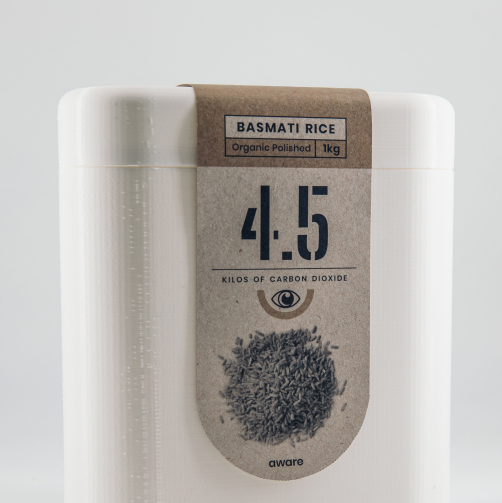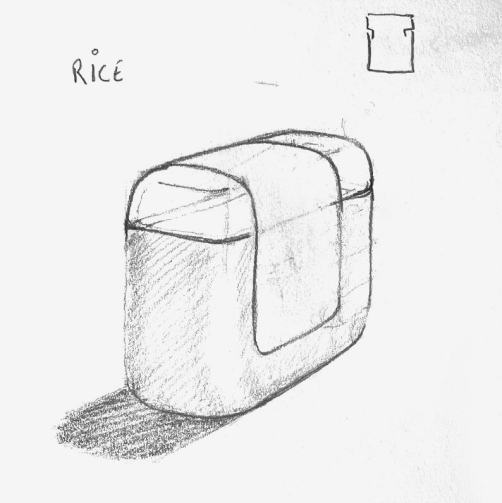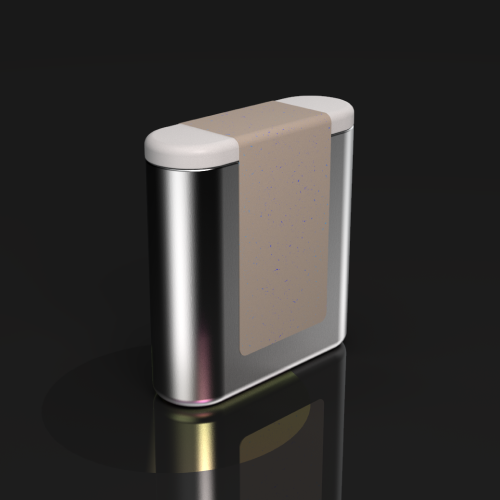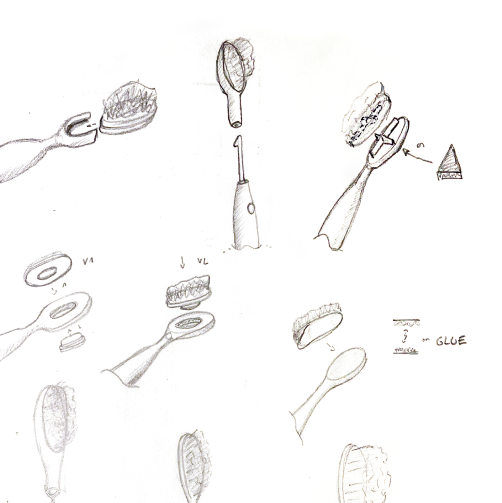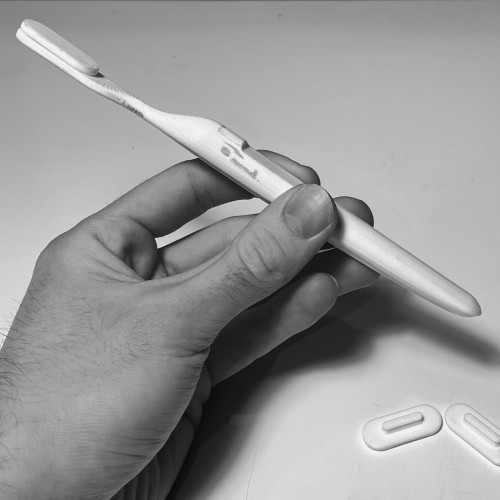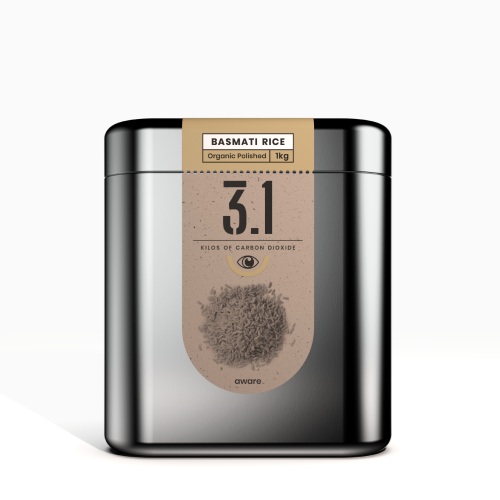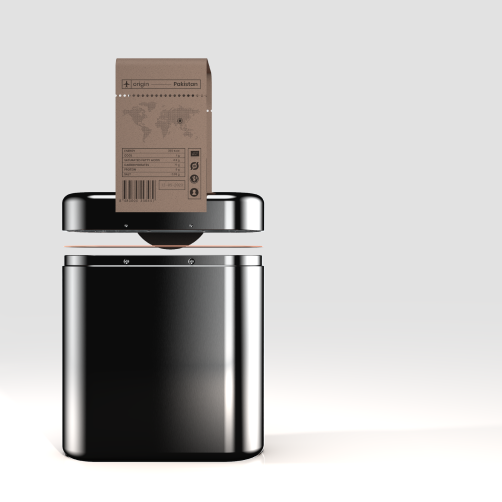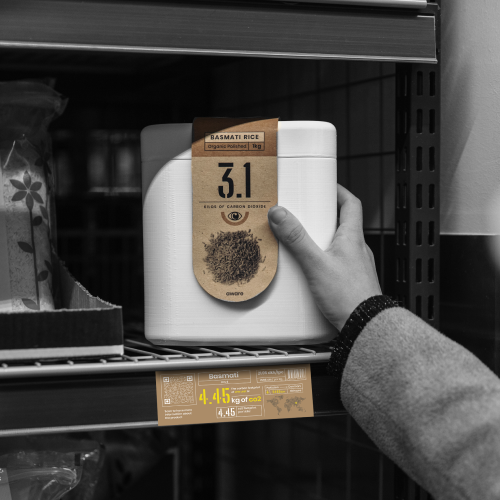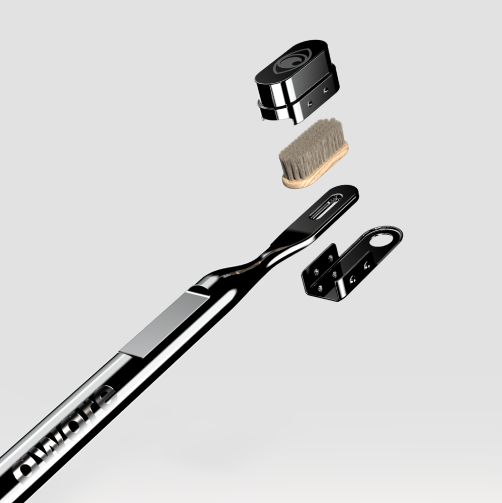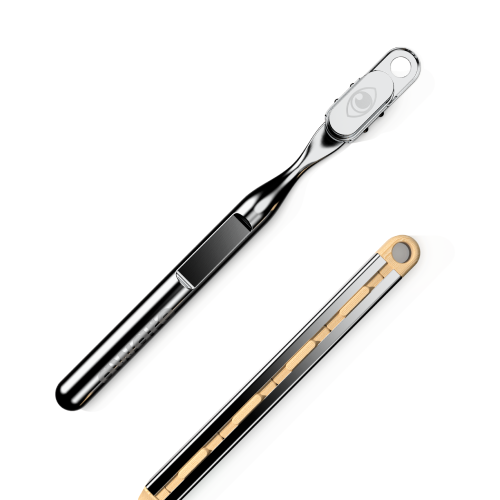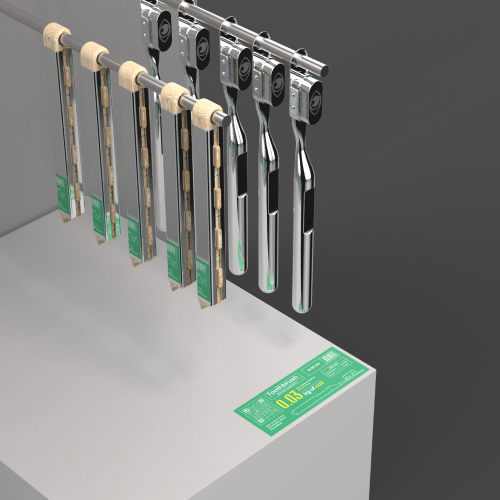Because of the lack of transparency in the products offered to us as consumers, it is increasingly difficult to have an overview over the environmental impact of our daily purchases. aware aims to provide information and transparency at the moment of purchase decision in the supermarket, to enable consumers to make a more sustainable choice. The solution is not limited to informing consumers, but is also implemented in a circular loop to achieve an even greater impact.
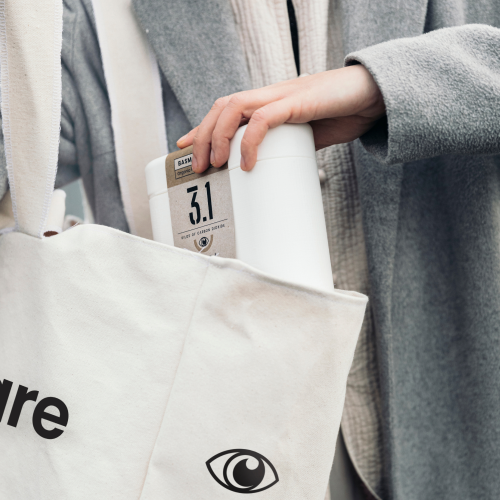
180
kilograms of packaging waste
per person per year in the EU.
How might we raise awareness about the impact of our daily purchases?
Team: Carlo Spini (branding, concept), Lloyd Revald (service design, concept), me (packaging design, concept)
different stages of the prototyping phase
People have no clear insight on whether a particular product is actually sustainable or not. Our packaging should therefore give the customer clear information about the product’s CO2 footprint and the distance it has travelled on its way to the supermarket shelf. Furthermore, we explored how to create a more sustainable packaging by making it circular—reusable and endlessly recyclable.
rice packaging: cardboard label, silicone safe-coating, brushed aluminium
changeable toothbrush (head: wood, castor oil toothbrush) (handle: aluminium)
We demonstrate our concept using two everyday products: Rice and toothbrushes. The rice packaging is made of aluminium. We made this choice to ensure an easy repair of the packaging and unlimited recyclability. The packaging can be used for any type of dry goods: flour, lentils, oat etc. It is airtight thanks to a small plastic line between the lid and the container. The handle of the toothbrush is also made of aluminium—you can keep it forever and even put it in the dishwasher every now and then. The head is removable and replacable, and made from 100% organic materials: a wooden plate with bristles made of castor oil.
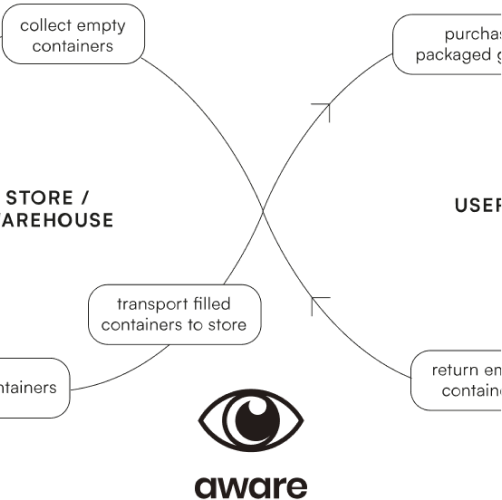
click to open fully
The aware loop is a compromise between the traditional supermarket experience and the more sustainable unpacked stores. The shopping experience itself doesn’t change much for the user—as before, they pick the items they want, pre-packaged in the supermarket. But instead of throwing away the packaging, they collect the empty containers at home and return them to the supermarket, just as they would with plastic bottles that are part of a deposit system. It is then the responsibility of the supermarket to collect the returned packaging and transport it to the main warehouse, where it is cleaned and refilled, or, if necessary, repaired or recycled into new packaging.
Team: Carlo Spini (branding, concept), Lloyd Revald (service design, concept), me (packaging design, concept)
